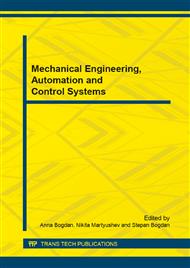p.426
p.436
p.442
p.447
p.453
p.459
p.465
p.469
p.476
Theoretical and Experimental Study of Led Luminaire
Abstract:
Today, the LED illumination takes one of the leading positions in the segment of lighting equipment. This is due to the lighting market demanding energy-efficient and ecologically safe sources of light. The purpose of this project was to investigate the temperature conditions of Сree LEDs, depending on impressed current. The basic idea was to obtain dependencies that could be used to select the optimal operating mode for getting the most LED lamp efficiency. Calculation of thermal conditions was held with the help of a special software application SolidWorks Flow Simulation. In the course of research 5 PCBs mounted on the aluminum housing of the designed luminaire were calculated. On each board different current from 0.35A to 1.5A was impressed. LED quantity on PCBs was chosen so that the luminous flux was the same on all the boards - 5klm. After the calculations the graphs and experiments, reflecting energy efficient characteristics of the luminaire were obtained. The analysis of obtained results elucidates that the operating heat regimes at LED supply currents varying from 0.35 A to 0.7 A are most suitable for the effective work of a lamp. At currents higher than 1 A, there is a considerable drop of the light output. The calculation of LEDs thermal condition (especially, powerful) and the choice of a suitable cooling system is one of the main criteria in the design of a reliable and durable LED lighting system.
Info:
Periodical:
Pages:
453-458
Citation:
Online since:
April 2015
Authors:
Price:
Сopyright:
© 2015 Trans Tech Publications Ltd. All Rights Reserved
Share:
Citation:


